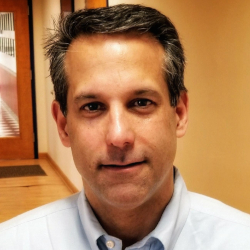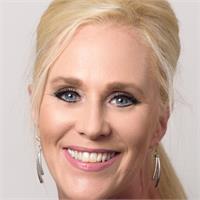The DISinformation Disaster: PR Unites To PRE-BUNK and Fight the Threats to Lives and Democracy
October 28, 2020 4:15 PM – 5:00 p.m.
Session Type: Reputation & Crisis Management
Since the “old time” accusations of deceptive advertising or “sleazy PR ploys,” public relations professionals have had to cope with the accusations of — and too often, the reality of — misleading communications. Today we are buried in blame like never before. It began with the explosion of communications channels and brands desperate for a share of eyes, likes, clicks and exposure of all kinds.
CONTENT GENERATION became an obsession with public relations and communications practitioners increasingly and unceasingly pushed to get MORE, MORE, MORE “out there.” Volume drove clicks and likes masqueraded as evaluation. MIStakes were far too easy to make in an atmosphere of quantity over quality. And with that mass of media and messages, some people started simply tuning out. And then the landscape darkened.
Propaganda, misinformation, disinformation, malinformation, conspiracy theories, rhetoric and hyperbole began contributing to the avalanche of material presented to the public. Often unchecked, the sheer volume of information from millions of sources is overwhelming for the average consumer and threatens society’s ability to apply reason, evaluate and make informed decisions based on authentic, actual facts. Frequency has amplified unsubstantiated information with the ability, and perhaps deliberate intent, to alarm, inflame, disrupt and manipulate the public.
Saturation makes it more important than ever that public relations professionals promote accurate and honest communication. In 2016, we first heard the term “alternative facts,” which was preceded by “fake news” and followed soon by “media hoax.” Investigative journalists and government agencies revealed the deliberate use of widely accepted consumer communications channels by interests of all sorts to plant content that was slanted, biased or increasingly, pure falsehoods.
DISinformation walked throughout the land and very few were even aware. “But I saw it on Facebook!” “I heard it on CNN.” “My cousin forwarded it to me.” Sorting between MIS and DIS was a challenge, and a landmark study by the Institute for Public Relations found that Americans were aware of the problem (two-thirds said it was as bad as gun violence or terrorism), couldn’t tell what was DIS or MIS, and while they said PR professionals could/should help fix the situation, they also held us responsible. They didn’t know who to trust including government and the media, and so increasingly, people began to trust no one, which would, of course, be a nightmare scenario for our organizations, our clients and our profession.
To further complicate the landscape, MALinformation — the purposeful distribution of incorrect information to harm an individual entered the communication arena. In general terms, the decline of trust in the profession is staggering. And then — coronavirus. The greatest need was for consumers to hear and heed directions from scientists and governments on how to stay alive, but consumers continued to hear mixed messages, counter directives based on political polarization and perhaps worse, so buried in CONTENT that they did not know where to go or who to trust to learn what to do to protect themselves and their families.
In the midst of a truly life and death worldwide crisis, MISinformation, DISinformation and worse, MALinformtion, drive conversations and critical decisions. If ever there were a clarion call for a solution, an aggressive movement to deal with DISinformation, MALinformation and its kinder cousin, MISinformation, it is now.
This session, through classic Socratic dialogue, brings together a group of leading global PR experts in related fields who will work to define the problem, draw implications and with full audience participation, establish a set of significant action steps that must be led by the public relations industry.
By the end of this session, participants will be able to:
CONTENT GENERATION became an obsession with public relations and communications practitioners increasingly and unceasingly pushed to get MORE, MORE, MORE “out there.” Volume drove clicks and likes masqueraded as evaluation. MIStakes were far too easy to make in an atmosphere of quantity over quality. And with that mass of media and messages, some people started simply tuning out. And then the landscape darkened.
Propaganda, misinformation, disinformation, malinformation, conspiracy theories, rhetoric and hyperbole began contributing to the avalanche of material presented to the public. Often unchecked, the sheer volume of information from millions of sources is overwhelming for the average consumer and threatens society’s ability to apply reason, evaluate and make informed decisions based on authentic, actual facts. Frequency has amplified unsubstantiated information with the ability, and perhaps deliberate intent, to alarm, inflame, disrupt and manipulate the public.
Saturation makes it more important than ever that public relations professionals promote accurate and honest communication. In 2016, we first heard the term “alternative facts,” which was preceded by “fake news” and followed soon by “media hoax.” Investigative journalists and government agencies revealed the deliberate use of widely accepted consumer communications channels by interests of all sorts to plant content that was slanted, biased or increasingly, pure falsehoods.
DISinformation walked throughout the land and very few were even aware. “But I saw it on Facebook!” “I heard it on CNN.” “My cousin forwarded it to me.” Sorting between MIS and DIS was a challenge, and a landmark study by the Institute for Public Relations found that Americans were aware of the problem (two-thirds said it was as bad as gun violence or terrorism), couldn’t tell what was DIS or MIS, and while they said PR professionals could/should help fix the situation, they also held us responsible. They didn’t know who to trust including government and the media, and so increasingly, people began to trust no one, which would, of course, be a nightmare scenario for our organizations, our clients and our profession.
To further complicate the landscape, MALinformation — the purposeful distribution of incorrect information to harm an individual entered the communication arena. In general terms, the decline of trust in the profession is staggering. And then — coronavirus. The greatest need was for consumers to hear and heed directions from scientists and governments on how to stay alive, but consumers continued to hear mixed messages, counter directives based on political polarization and perhaps worse, so buried in CONTENT that they did not know where to go or who to trust to learn what to do to protect themselves and their families.
In the midst of a truly life and death worldwide crisis, MISinformation, DISinformation and worse, MALinformtion, drive conversations and critical decisions. If ever there were a clarion call for a solution, an aggressive movement to deal with DISinformation, MALinformation and its kinder cousin, MISinformation, it is now.
This session, through classic Socratic dialogue, brings together a group of leading global PR experts in related fields who will work to define the problem, draw implications and with full audience participation, establish a set of significant action steps that must be led by the public relations industry.
By the end of this session, participants will be able to:
- Define and describe the impact of mis, dis and malinformation.
- Trace the impact of these kinds of information on the effectiveness and reputation of public relations practitioners.
- Identify key steps that the PR profession and PRSA must take to rebuild trust and truth.

Michael Cherenson, APR, Fellow PRSA
Executive Vice President, SCG Advertising + Public Relations
Presenter

